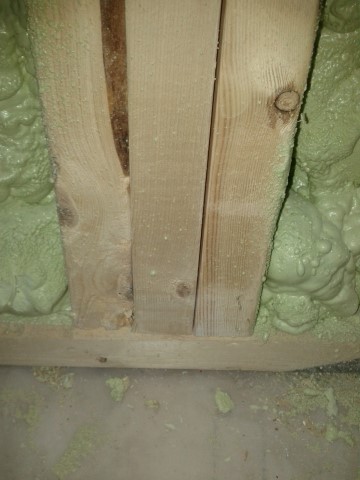For high quality products, the manufacturing process needs to be understood and controlled very tightly. So too with spray foam when it’s manufactured on the job site. So when you order foam for your project, the crew that shows up should be sharp, organized and be well trained. When foam is manufactured and installed by a good team, the end result should be years of durable comfort.
The ‘A’ Foam Team
The guys you want on your job site are trained in a class room setting, with lots of building science in there for good measure and have a year’s experience with a professional spray applicator as mentor. They will know:
- their equipment inside out, treat their gear with respect and keep a clean truck,
- their foam well as each brand of foam has a slightly different recipe for making good foam,
- to test their installed foam for adhesion and density for each barrel set (CUFCA requirements),
- to connect and seal insulation planes – irrespective of insulation type – together.
The letter of the Law
Here are the two standards referenced by OBC for the manufacture and installation of spray foam:
“The … product meets the following standard:
•CAN/ULC-S705.1-01(including Amendments 1 and 2), “Standard for Thermal Insulation – Spray Applied Rigid Polyurethane Foam, Medium Density – Material – Specification.”
•CAN/ULC-S705.2-05, “Standard for Thermal Insulation – Spray Applied Rigid Polyurethane Foam, Medium Density – Application.”
When things go off-ratio
In a nutshell, to manufacture good, durable foam, the two chemicals have to be married at the spray nozzle tip with precise temperature, flow and pressure requirements. This delicate balance just takes one spec of dust or lump of chemical to throw things off and though it happens less frequently with good crews, it does happen to them too. The difference between good crews and irresponsible foam applicators is their response to the situation.
A good crew knows almost immediately when things are going wrong and they clean it up:
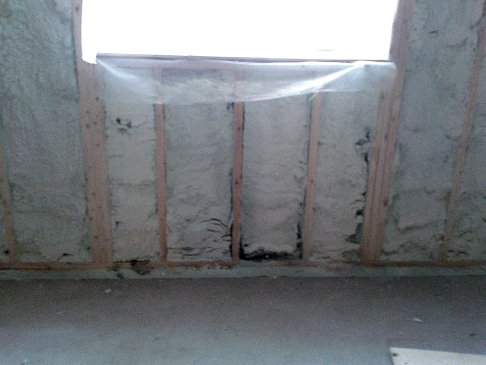
This section of 2LBS foam went off-ratio and the crew should have cleaned out and re-sprayed new foam. There was uncured liquid resin at the bottom of the stud cavity and much of the foam had shrunken back.
And sometimes the the change in foam isn’t as blatantly obvious as in the case below. Allison Bailes III of Energy Vanguard has documented the same phenomenon in the USA. I met the builder who asked me i this was ‘normal’, frankly, I was stunned at what the builder discovered. There were as many as 15 examples of this puling away in the one basement. The builder found that where there were multiple studs ganged together, the two studs touching adjacent foam were mechanically pulled in towards to foam in the stud bay as in below.
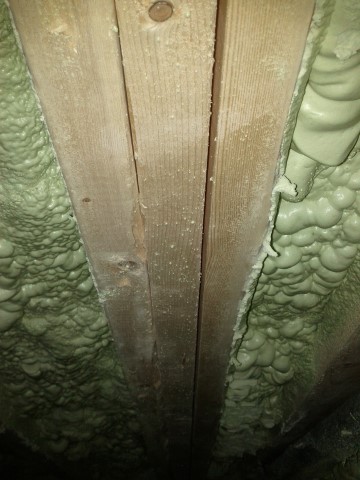
Photo 2: Same studs as in Photo 1 at 4′ from the floor, the foam had pulled the stud (right) away 1/4″ from the other two studs (left).
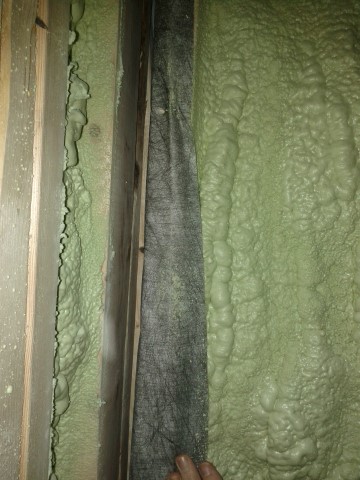
This inside corner (below grade stud wall) at 4′ height shows full 3/4″ gap foamed after the foam was applied. A straight edge 2×4 on face confirmed the curvature.
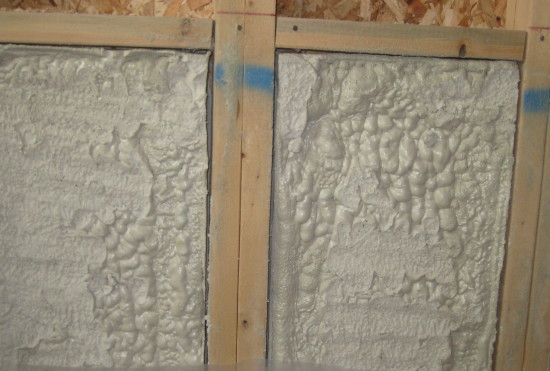
The foam in the above photo pulled away from the studs and even 1/2″ all around. This is not the wood drying its foam not being manufactured (i.e. sprayed) to specification.
So when you find a good foam crew, stick to them!

